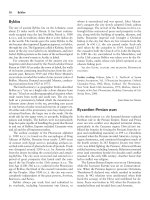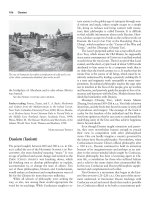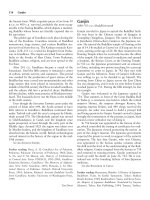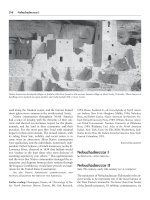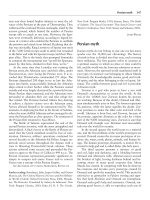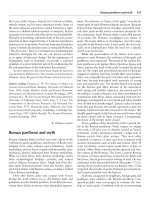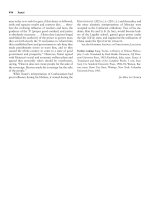Encyclopedia of world history (facts on file library of world history) 7 volume set ( PDFDrive ) 2081
Bạn đang xem bản rút gọn của tài liệu. Xem và tải ngay bản đầy đủ của tài liệu tại đây (163.87 KB, 1 trang )
360
Romanov dynasty
Sardinia, and the Ottoman Empire, fought from 1853
to 1856 at the end of the reign of Nicholas I, made it
obvious that Russia needed reform.
ALEXANDER II
The next czar, Alexander II, the son of Nicholas I, helped
Russia reform. Alexander ruled from 1855 to 1881 and
became known as the czar liberator because he freed the
serfs. Alexander II realized that forcing labor from the
serfs was not an economical way for Russia to operate,
and many nobles were also beginning to think that serfdom should be ended. Just before the American Civil
War began, Alexander II freed the serfs with the Emancipation Act of February 18, 1861. The Emancipation Act
freed 52 million serfs, or about 45 percent of Russia’s
population, but it did not solve Russia’s problem of peasant unrest. Only serfs who had been farmers were given
land, excluding house serfs. Serfs had to continue working for estate owners for two years after being freed and
had to pay over a 49-year period for the land that they
had been given.
Alexander II also instituted other reforms. He
changed the military and shortened the required time
of service for peasants from 25 to six years. He created
the legal profession, opening trials and instituting equal
treatment under the law. Beginning in 1864 he instructed
the Ministry of Education to create a national system
of primary schools. As people, especially university students, became better educated they became more critical
of the government. University students and the populace
at large began to demand changes. On March 13, 1881,
an agitator threw a hand-made bomb at Alexander’s carriage. He got out of the carriage to see what had happened, and a second bomb exploded. The czar and his
assassin, Ignacy Hryniewiecki, were killed.
Alexander III succeeded his father, and, fearful
of his father’s murderers, he tightened the autocratic
rule in Russia, reversing many of the reforms that the
more liberal Alexander II had pushed through. He
renewed the policy of Russian Orthodoxy, autocracy,
and nationalism. Marxism began to grow during his
reign, with Bolshevik and Menshevik groups forming,
and leaders like Lenin, Plekhanov, and Pavel Martov
emerging as revolutionaries.
Alexander’s son Nicholas II began ruling Russia in
1894, after Alexander unexpectedly died of kidney disease at age 49. Industrialism had finally reached Russia,
and a working middle class was emerging. Nicholas II
did not want to allow workers to unite and form unions,
as they were doing all over the world. After the czar created state-approved unions, he refused to meet a striking
Russia’s czar Alexander II was killed by an assassin’s bomb on
March 13, 1881.
group from one of these and ordered his soldiers to fire
upon it. The resulting massacre of hundreds of people,
which came to be known as Bloody Sunday, set off a
revolt in 1905 that motivated Nicholas II to endorse the
October Manifest, which gave people civil liberties and
created the Duma.
Russia went to war in 1914 to defend the Serbs
when Austria declared war on Serbia, but the Russian
armies had inadequate weapons and suffered from poor
leadership. Nicholas II himself went to the lines to lead
his armies, but the problems increased and many soldiers deserted.
These soldiers were instrumental in the February
Revolution in 1917, which ended the Romanov dynasty. Nicholas II and his family were put under house
arrest and taken to Yekaterinburg. Bolsheviks killed
the last Romanov czar, Nicholas II, and his family

